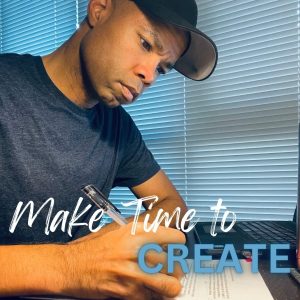
I don’t remember the exact year, or the precise moment, when I knew I wanted to be a writer. It was, however, during university when I started spending more time on creative writing than my studies. Case in point: I signed up for a writing class at the local community college despite carrying a full course load. Although I didn’t know it then, it would set an important precedent for my life: make time to create.
The ‘No Time’ Dilemma
Life gets busy, and complicated, really quickly. So many things vie for our attention that it’s easy to feel like there’s no time to do what we want or love. I have spent most of my adult life writing around day jobs. Most days, anywhere from ten to twelve hours of my day are already accounted for once the commute time to and from work is factored in. Don’t forget familial and social responsibilities that, on certain days, can—if allowed to—leave no time to write. And now with social media, and the pressure to be always-on and available 24/7, how do you make time to create? How do you push past the ‘no time’ dilemma?
Make Time to Create
If you’re a creative with a day job (like me), having time to make art isn’t always easy. That means that we must make our art a priority, something I’ve done since graduating university. Mornings are my most creative time, and I protect them judiciously for my writing. I get up around 2:30 am (because now I’m also training for the TCS Toronto Waterfront Marathon in October), what my friends call an ungodly hour, to write. It’s during the quietness of those early morning hours when I am most focused, and when I often more easily enter that ‘flow’ state. And by writing every morning, I am creating consistently.

Those early morning starts during the work week are crucial to my writing, but so are my weekends. While I’m working on a novel, I’m also publishing an article on my blog every week. I’ve never enjoyed taking a lazy weekend to binge-watch TV, sleep in, or do nothing. Weekends might involve groceries and laundry, but in between tasks I’m writing. I’ve declined invites to dinners or to see a movie from friends and family because my free time is guarded for my writing. Not everyone understands that level of commitment. And that’s okay.
Because the greatest tragedy in life, as far as I’m concerned, is to deny who you really are. Phil Hansen, in his book, Creativity Sucks, puts it bluntly: “Your commitment to your creativity is your commitment to yourself. Be willing to rearrange your schedule and reprioritize your life so that you’re never abandoning your greatest love by putting your creativity on the shelf.”1
Stay the Course
 As with life, there is an ebb and flow to creativity. There are times when everything flows, when ideas come as easily as turning on the kitchen tap. You love what you create and are convinced that, when you reveal it to the world, people will get it. There are also times when it feels like the well of ideas runs dry, or their execution seems off, or that project/idea you laboured over with love gets lambasted. Both seasons are important to creatives. They let us hone our skills and, equally, aid in the development of a thick skin.
As with life, there is an ebb and flow to creativity. There are times when everything flows, when ideas come as easily as turning on the kitchen tap. You love what you create and are convinced that, when you reveal it to the world, people will get it. There are also times when it feels like the well of ideas runs dry, or their execution seems off, or that project/idea you laboured over with love gets lambasted. Both seasons are important to creatives. They let us hone our skills and, equally, aid in the development of a thick skin.
And the best way to survive those highs and lows—and to become relentless—is to always make time to create.
- Hansen, P. (2020). Creativity Sucks: And 30 Other Things I’ve Learned While Living a Weird, Amazing, Crazy, Creative Life, New York, TarcherPerigee, p. 61. [↩]
Leave a Reply